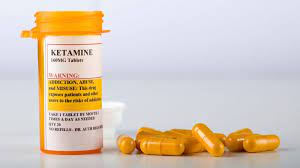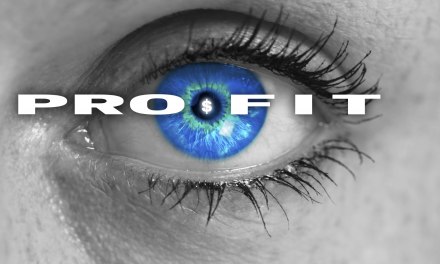In case you’re wondering, ‘mean green’ was an original street name given to the dissociative anesthetic ketamine when it first escaped from the veterinary clinic, to become a favored drug of recreational users. This was in 1967. In the dance clubs of the era, it was sometimes called “Vitamin K”.
Compared to its close relative, Phencyclidine (PCP), ketamine had the advantage of a short duration of effect– under an hour if injected, two if taken orally. That was ideal for clubgoers. A dose earlier in the evening would presumably have worn off by the time you needed to stagger back to your apartment. No bad hangovers, either.
It wasn’t necessary to take all that much of the drug to achieve its hallucinatory effect. That was a good thing, because beyond a certain dose, you risked landing flat on your back, immobilized, until it wore off.
Eventually MDMA– ‘Molly’– superseded ketamine in popularity. Later, in the wake of the medicalization of psychedelics, and the subsequent appearance of so-called ketamine ‘clinics’ where the drug was prescribed off-label for a variety of emotional problems –well, suffice to say it’s back in the news.
Now the death of Matthew Perry has helped re-introduce the media to ketamine’s dangerous side. For instance, this recent piece from The Guardian:
Will Matthew Perry’s death spell the end of the ketamine wellness industry?
Now, months afterwards, it appears the answer to that question is “no”. Or at least not yet.
By the way, Perry wasn’t the first victim to drown under the influence of ketamine. Author and ‘psychonaut’ D. M. Turner died in a similar situation all the way back in 1996, at age 34, on New Year’s Eve. Turner had been a staunch advocate for (and promoter of) the use of psychedelic drugs as entheogens, chemicals that could trigger a deep spiritual experience.
Much the way a shaman might employ ayahuasca, except you can get a prescription for ketamine over the Internet, for home use.
At this point in the US, there are perhaps a few hundred thousand people who would reasonably qualify as ketamine-addicted. I think Matthew Perry might have been one of them, based on his comment that once he tried ketamine, he knew he’d found ‘the one’ drug for him.
His drug of choice, as experts like to call it, although in Perry’s case, perhaps it was more of a compulsion.
So now we read that the authorities have arrested several people, including a couple of physicians, for the crime of supplying Perry with the drug that killed him. Now we’ll have a trial, maybe more than one. It’ll be in the news, for a while at least.
Then there’ll be another such death– different, of course, but somehow the same.












